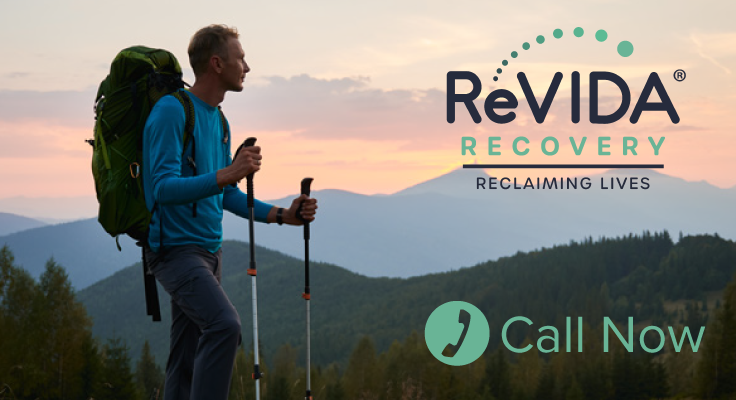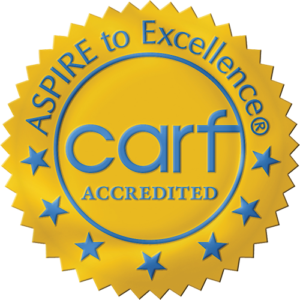
If there is one thing society is good at, it is telling others our opinions.
Everyone has their two cents about hot topics such as LGBTQ, raising children, and even down to the food we consume. With the internet and social media taking the world by storm, there is no way to post a photo without getting some form of opinionated feedback. Part of this is due to stigmas surrounding the ways we are “supposed to” live our lives. The other part is that with everything being on the internet, people can say what they want with no fear of physical harm. With all these judgments being passed, it is no wonder that addiction has become stigmatized. How can we share about substance use disorder recovery when everyone is passing out opinions?
When it comes to heroin use, Tennessee communities are well aware of the effects. The Knox County Mental Health Report for 2023 was recently released, and it was noted that 452 people died from a drug overdose in 2021 throughout the county. The report also states the correlation between mental health conditions and substance use disorders among Knox County residents.
At ReVIDA® Recovery, we are working to bridge the gap and provide treatment options for substance use disorder in our communities where resources are lacking. Today, we are discussing what goes into substance use recovery, specifically the heroin recovery rate.
Table of Contents
The Percentage of Heroin Users That Recover
There is no true way to measure the percentage of heroin users that recover. This is because recovery is a subjective word; there is not one set definition to describe it. For example, the person who was using heroin every day goes and gets treatment. When they finish the program, they decide that instead of using heroin every day, they have a few alcoholic drinks on the weekend. To that person, they are recovered from heroin. Some people disagree and say recovery is no longer using any substance at all. This is where the beauty of recovery comes into play. People can recover on their own terms and in their own ways. The end goal is ultimately creating healthier habits and coping skills to reduce substance use.
In Knox County, the health department has been monitoring the rate of opioid overdoses among its residents. With the rate of non-fatal hospital stays for overdose rising within the county, programs have been implemented to connect these patients with substance use disorder treatment. There are also programs for needle exchanges as well as resource connections.
Warning Signs of Relapse
For some, a relapse will be part of their recovery story. A relapse means that the person was living substance-free and then used again. There are different opinions on what defines a relapse. Some will say that a relapse only applies to the substance that was being used before. For example, the person whose substance of choice was heroin will only qualify as a relapse if they use heroin again. Others will say it applies to all substance use, meaning even if the person drinks alcohol instead of using heroin, they have relapsed.
Similar to signs of heroin addiction, the signs of heroin relapse can be noticeable. People tend to use heroin in order to change the way they are feeling. This can be associated with times of stress or difficulty, or even to amplify feelings of happiness. When someone in recovery feels the stresses of life becoming too much, they may consider returning to use. They mention how they are feeling to friends or loved ones, and at that time, providing support is crucial to avoid a relapse.

What Is the Relapse Rate for Heroin?
The national average rate of relapse is 40-60%. However, those who use opioids such as heroin are even more likely to experience a relapse within the first year. This is why it is important to stay connected after completing a treatment program. Keeping in touch with peers who are also in recovery helps to provide support during difficult times and celebrate goals and achievements.
Knox County has implemented a program within the criminal justice system called “A Shot At Life.” This program connects those who are incarcerated for substance misuse to treatment options such as medication-assisted treatment. The program began in 2017 and the results have been overwhelmingly successful. 67% of participants maintained abstinence from substance use for 6 months or more, which has helped cut down on the amount of rearrests in the county.
How to Help Prevent Relapse
While emotional distress is a potential cause of relapse, there are other factors that can be changed to help prevent it. Surrounding yourself with people who are also in recovery helps provide extra support and gives you people to talk to in times of crisis. Changing friend groups from people you used to use heroin with will also help prevent a relapse. Focusing on yourself, putting your needs first, and recognizing triggers will all help keep relapse out of your recovery journey.
Heroin Withdrawal and Overdose Effects
One of the biggest reasons those managing a heroin use disorder do not seek treatment is heroin withdrawal symptoms. While not typically life-threatening, these symptoms are unpleasant and can be painful. Increased depression, anxiety, agitation, and mood swings can cause intrusive thoughts that normally wouldn’t cross your mind. Always seek medical attention if you are having thoughts of self-harm, harming others, suicidal ideation, or if the side effects of heroin are causing harm.
A heroin overdose is more likely to occur after treatment is completed. Heroin works by binding to the opioid receptors in the brain. After prolonged use, these receptors become desensitized and the brain requires more heroin in order to feel the same effects. After the brain and body have detoxified from heroin, they return to a normal functioning state. This means that the amount of heroin being taken before will overwhelm the brain and body. Those that relapse and think they can take the same amount as before are far more likely to experience an overdose.
Getting Treatment for Heroin Addiction
Treatment options for heroin addiction have come a long way over the years. Many have found success using different methods. Some have utilized therapy techniques to create healthy coping skills while others participate in 12-step recovery programs. There is no right or wrong way to heroin use disorder recovery, and finding what works for you is the key to creating lasting recovery.
At ReVIDA® Recovery, we know that recovery from heroin addiction is fully achievable. We have seen firsthand the benefits medication-assisted treatment (MAT) and therapy can have on opioid use disorders. Our compassionate and knowledgeable staff work with you to create an individualized treatment plan for heroin addiction to get you on the path to recovery today.
If you or someone you love is living with a heroin use disorder, there is help available right at your fingertips. ReVIDA® Recovery understands that it may seem impossible to stop using right now, and works with you to come up with a plan to get you into heroin recovery. Call us today at 423-631-0432 to schedule an appointment and learn more about our program.
FAQs
What do we know about the heroin relapse rates?
Around 40-60% of people relapse on substances, and that percentage tends to be higher for those that use opioids such as heroin.
Is it possible to improve the heroin addiction recovery rate?
The heroin addiction recovery rate is not a set number that goes up or down. Recovery is subjective and means something different to everyone. There is no true way to collect this data due to that.
What is the heroin rehab success rate?
Those that seek treatment for heroin use disorder in a rehab facility are more likely to find recovery. Rehab facilities tend to be equipped with therapists, behavioral health specialists, and clinicians that can help people build skills to prevent returning to substance misuse.










